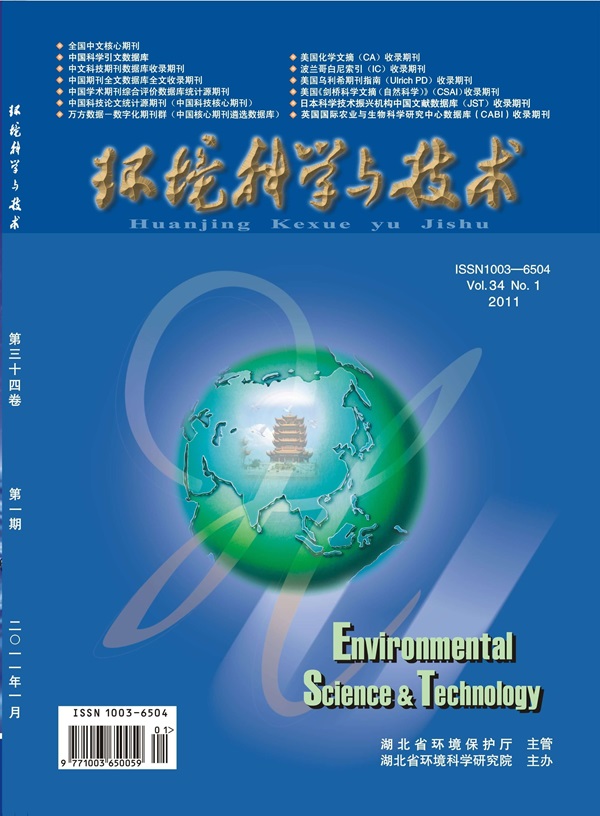Assembly of Low-Dose Nonionic Surfactant Hydrophobic Functional Groups with Extracellular Polymeric Substances to Destabilize Waste-Activated Sludge and Improve Biomass Energy Recovery
IF 10.8
1区 环境科学与生态学
Q1 ENGINEERING, ENVIRONMENTAL
引用次数: 0
Abstract
To destabilize the microstructure resulting from microorganism physiology and substance combination in waste-activated sludge (WAS), this study proposes a novel approach by employing nonionic surfactants for pretreatment with a specific focus on alkyl polyglucosides (APG). Inspired by the enhanced dispersibility and targeted hydrophobic interactions of surfactants at low doses, this approach strategically applies APG pretreatment at 0.05 and 0.10 g/g TS, which boosted biogas production by 49.7 and 62.9%, respectively, compared to the control group. The analysis showed that the assembly of APG hydrophobic functional groups with hydrophobic functional groups in EPS enhanced the surface free energy of sludge particles and led to the evacuation of TB-EPS. Microbial diversity analysis reveals shifts in bacteria and archaea in response to APG pretreatment, significant as bacteria Azonexus, Syntrophomonas, Lutispora, and archaea Methanosarcina emerge as new dominant genera. When adding a low dose of APG (<0.10 g/g TS), the destabilization of sludge microstructure (weakening nonfunctional binding between sludge particles and biological enzymes) led to a significant increase in the freedom and activity of enzymes involved in methane metabolism pathways. This study can provide valuable insights for surface interface regulation and efficient biomass energy recovery of complex organic waste.

低剂量非离子表面活性剂疏水官能团与细胞外高分子物质组装,以破坏废弃活性污泥的稳定性并提高生物质能源回收率
为了破坏垃圾活性污泥(WAS)中微生物生理和物质组合导致的微观结构的不稳定性,本研究提出了一种新的方法,即采用非离子表面活性剂对烷基多糖苷(APG)进行预处理。受表面活性剂在低剂量下增强的分散性和靶向疏水相互作用的启发,该方法有策略地采用0.05和0.10 g/g TS的APG预处理,与对照组相比,沼气产量分别提高了49.7%和62.9%。分析表明,APG疏水官能团与疏水官能团在EPS中的组装增强了污泥颗粒的表面自由能,导致TB-EPS的排出。微生物多样性分析揭示了APG预处理对细菌和古细菌的影响,其中氮胞菌、Syntrophomonas、Lutispora和甲烷古细菌成为新的优势属。当添加低剂量APG (<0.10 g/g TS)时,污泥微观结构的不稳定(污泥颗粒与生物酶之间的非功能性结合减弱)导致参与甲烷代谢途径的酶的自由度和活性显著增加。该研究为复杂有机废弃物的表面界面调控和高效生物质能源回收提供了有价值的见解。
本文章由计算机程序翻译,如有差异,请以英文原文为准。
求助全文
约1分钟内获得全文
求助全文
来源期刊

环境科学与技术
环境科学-工程:环境
CiteScore
17.50
自引率
9.60%
发文量
12359
审稿时长
2.8 months
期刊介绍:
Environmental Science & Technology (ES&T) is a co-sponsored academic and technical magazine by the Hubei Provincial Environmental Protection Bureau and the Hubei Provincial Academy of Environmental Sciences.
Environmental Science & Technology (ES&T) holds the status of Chinese core journals, scientific papers source journals of China, Chinese Science Citation Database source journals, and Chinese Academic Journal Comprehensive Evaluation Database source journals. This publication focuses on the academic field of environmental protection, featuring articles related to environmental protection and technical advancements.
 求助内容:
求助内容: 应助结果提醒方式:
应助结果提醒方式:


